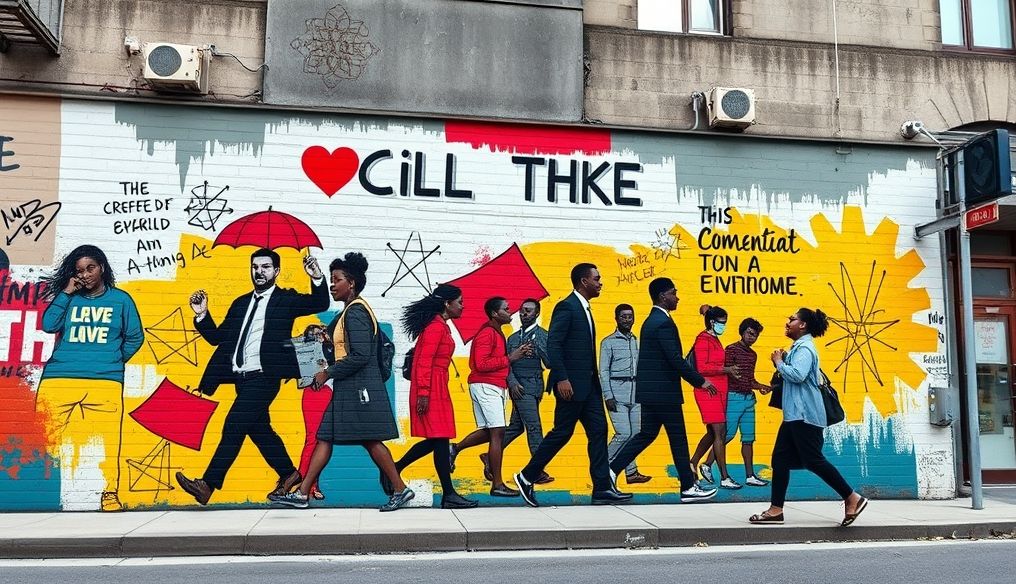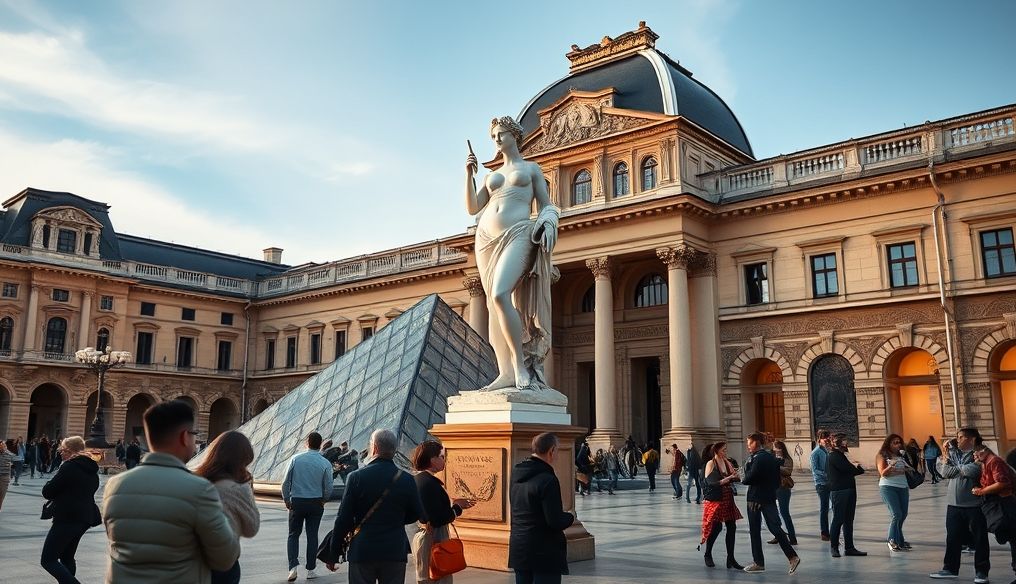Street Art: Between Vandalism and Creativity
Street art, also known as graffiti, is a form of artistic expression executed in public spaces. This type of art sparks widespread debate, with some considering it vandalism of public property, while others see it as a worthy form of artistic expression. This article explores the various aspects of street art and discusses whether it should be considered vandalism or creativity.
What is Street Art?
Street art encompasses a wide range of styles and techniques, including:
- Graffiti: Drawings or writings sprayed on walls using spray paint.
- Stickers: Images or drawings printed on stickers and pasted in public places.
- Murals: Large artistic paintings painted on walls.
- Sculptures: Three-dimensional artworks placed in public spaces.
- Installations: Temporary artworks created in public spaces using various materials.
Arguments in Favor of Street Art as Creativity
There are many arguments supporting the consideration of street art as artistic creativity:
- Self-Expression: Street art allows artists to express their thoughts, feelings, and opinions in a free and direct manner.
- Beautifying Public Spaces: Street art can transform ugly and boring places into beautiful and inspiring ones.
- Stimulating Discussion and Thought: Street art can spark discussion about important social and political issues and encourage people to think critically.
- Encouraging Creativity: Street art can encourage others to be creative and express themselves through art.
- Activating Communities: Street art can activate local communities and attract tourists and visitors.
Arguments Against Street Art as Vandalism
There are also many arguments supporting the consideration of street art as vandalism of public property:
- Property Damage: Street art is often executed on public or private property without permission, which is considered vandalism and destruction of property.
- Visual Pollution: Street art can distort the aesthetic appearance of cities and neighborhoods, making them look ugly and disorganized.
- Encouraging Crime: Street art can encourage the commission of other crimes, such as theft and vandalism.
- Economic Cost: Removing street art from public and private property requires significant economic cost.
- Offensive Messages: Street art may contain offensive, violent, or racist messages, which incite hatred and violence.
The Difference Between Street Art and Vandalism
The line between street art and vandalism is often unclear. It depends on several factors, including:
- Permission: Was permission obtained from the property owner before executing the artwork?
- Content: Does the artwork contain offensive or violent messages?
- Artistic Quality: Does the artwork have high artistic quality?
- Impact on Society: Does the artwork contribute to improving society or distorting it?
Examples of Street Art Considered Creativity
There are many examples of street art that are considered artistic creativity and are widely appreciated, including:
- Banksy's Works: Banksy is a British graffiti artist famous for his satirical and political works that appear in public places around the world.
- The Berlin Wall: After the fall of the Berlin Wall, the wall turned into a huge artwork expressed by artists from all over the world.
- Art Festivals: Many art festivals are held around the world that showcase street art and encourage artists to be creative.
Examples of Street Art Considered Vandalism
There are also many examples of street art that are considered vandalism of public property, including:
- Random Writing on Walls: Random writing on walls without any artistic purpose or clear message is considered vandalism.
- Offensive Drawings: Drawings containing offensive, violent, or racist messages are considered vandalism.
- Drawings that Distort Historical Buildings: Drawings that distort historical buildings or cultural landmarks are considered vandalism.
How Can Street Art Be Organized?
Street art can be organized through:
- Allocating Specific Spaces for Street Art: Local governments can allocate specific spaces in cities for artistic works.
- Issuing Licenses to Street Artists: Local governments can issue licenses to street artists who wish to execute artworks in public places.
- Organizing Art Festivals: Local governments and non-governmental organizations can organize art festivals that showcase street art and encourage artists to be creative.
- Educating the Public: Local governments, schools, and non-governmental organizations can educate the public about street art and its importance.
Conclusion
Street art is a form of artistic expression that sparks widespread debate. While it can be a powerful means of self-expression and beautifying public spaces, it can also be vandalism of public property and distortion of the public view. By organizing street art and educating the public about it, we can benefit from its advantages while minimizing its negative effects.
Studies and Research:
A study published in the journal "Urban Studies" showed that street art can contribute to revitalizing local communities and increasing tourism.
"Street art, when properly organized, can have a positive impact on the local economy and the city's cultural scene."
Practical Tips:
- If you are a street artist, get permission before painting on private or public property.
- If you are a property owner, consider allowing street artists to paint on your walls.
- Support local art festivals that showcase street art.
Frequently Asked Questions About Street Art
Is street art legal?
It depends on the location. In some cities, street art is legal if prior permission is obtained. In other cities, it is illegal regardless of permission.
What materials are used in street art?
Street artists use a variety of materials, including spray paint, stickers, paints, and even recycled materials.
Can street art have a positive impact on society?
Yes, street art can beautify public spaces, spark discussion about social issues, and encourage creativity.




